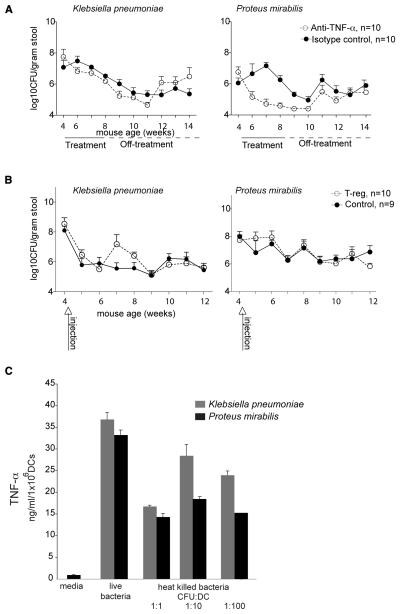Figure 4. Klebsiella pneumoniae and Proteus mirabilis colonization patterns change in response to immunotherapies and both strains induce TNF-α production in T-bet−/− Rag2−/− MyD88−/− bone marrow derived DCs.
(A) Successful immunotherapy by TNF-α blockade alters levels of culturable Enterobacteriaceae in the feces. TRUC mice were treated with curative anti-TNF-α (15mg/kg every week) (open circles) or isotype control (shaded circles) for four weeks, after which time therapy was stopped. Enterobacteriaceae levels were defined by culture of fecal samples obtained 1 day before, during, and after treatment (up to 14 weeks of age). Circles represent the mean value of anti-TNF-α mice (n=10) and isotype controls (n=10). Error bars represent the standard deviation. (B) Successful immunotherapy by T-reg infusion does not produce statistically significant differences in the levels of culturable Enterobacteriaceae species compared to vehicle-treated controls. TRUC mice were injected once with 75,000 CD4+CD62LhiCD25+ T-regulatory cells (n=10) or PBS (n=9). (C) TNF-α production from T-bet−/− Rag2−/− MyD88−/− bone marrow derived DCs co-cultured with heat-killed and live K. pneumoniae and P. mirabilis strains. Bars represent the mean value of triplicate determinations/sample. Error bars are 1 S.D. Data are representative of three independent experiments.

